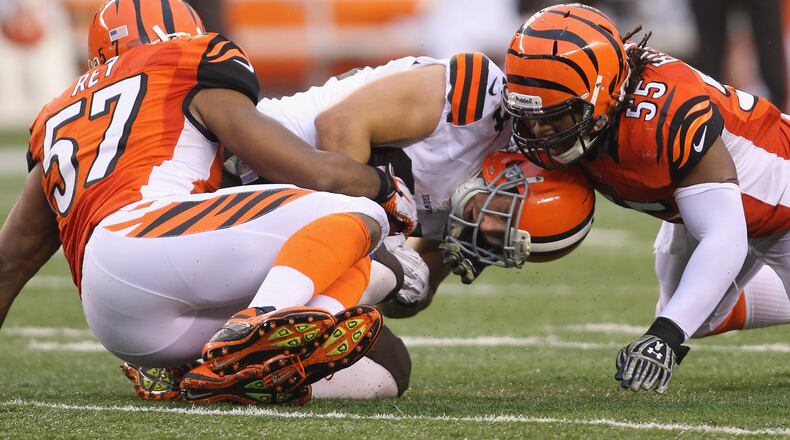I realize a lot of early freak outs on social media turn out to be overreactions, but in this case extreme concerns are justified.
😦 Need clarification, does this mean offensive players too? A RB lowers hits head like every time he runs the balls just before contact? What is the limit on number of flags per NFL game? https://t.co/gnk3Be3dNP
— Rocky Boiman (@ROCKYBOIMAN50) March 27, 2018
Text from former NFL linebacker: “Can't believe how ridiculous this lowering of the head thing is. Go back and watch any game and you will see probably 30 to 50 examples of guys lowering their head on contact. A f——— mess. Why does the NFL want to self-destruct?”
— Adam Schefter (@AdamSchefter) March 28, 2018
Literally applying the rule as written would significantly change the game and greatly reduce its appeal to play or watch.
That’s also a good indication the rule will not be literally applied.
In case you missed the late-afternoon news dump, a part of the “unnecessary roughness” section of the rulebook was amended to read simply, “It is a foul if a player lowers his head to initiate and make contact with his helmet against an opponent.”
Previously, the rule banned initiation of “forcible contact by delivering a blow with the top/crown of his helmet against an opponent when both players are clearly outside the tackle box (an area extending from tackle to tackle and from three yards beyond the line of scrimmage to the offensive team’s end line). Incidental contact by the helmet of a runner or tackler against at opponent shall not be a foul.”
All of that language was removed in favor of more simple wording that invites all kinds of problems in enforcement — even more than we find in the generally intolerable college targeting rule.
Banning all helmet contact is not feasible or necessary, but that is effectively what eliminating the last line about “incidental contact” could do, at least based on my interpretation of what lowering the head means because that happens in some form or another on nearly every tackle.
The NFL's old catch rules burned both the @Bengals and Steelers over the years https://t.co/FhE4EHUNY6 pic.twitter.com/AlkVa1GLvo
— daytonsports (@daytonsports) March 28, 2018
It looks like they are trying to make the rule less specific, which was a good idea in defining a catch but is problematic in tackling as long as the head remains on top of the shoulders.
The biggest problem with the college targeting rule is that it’s too broad. That’s why even while changing behaviors (eliminating some gratuitous shots to the head) it has been an ongoing problem for the sport.
Therefore it stands to reason if the new version in the NFL is even broader, it will lead to more unintended consequences.
However, numbers from an ESPN story about the new NFL rule indicate change might not be as drastic as feared.
According to NFL research, nearly one out of every two helmet-to-helmet hits caused a concussion in 2017. That's up from a ratio of one out of every three in 2015.
Since we’re told earlier in the story there were 291 concussions last season, it stands to reason there were 600 or so “helmet to helmet” hits last season.
Considering the number of plays in a season, that is a very small number, so there is hope the rule will be applied narrowly and only the most egregious-looking hits will be penalized.
Will that be the case?
Guess we’ll have to wait and see... and probably fear the worst in the meantime.
About the Author

